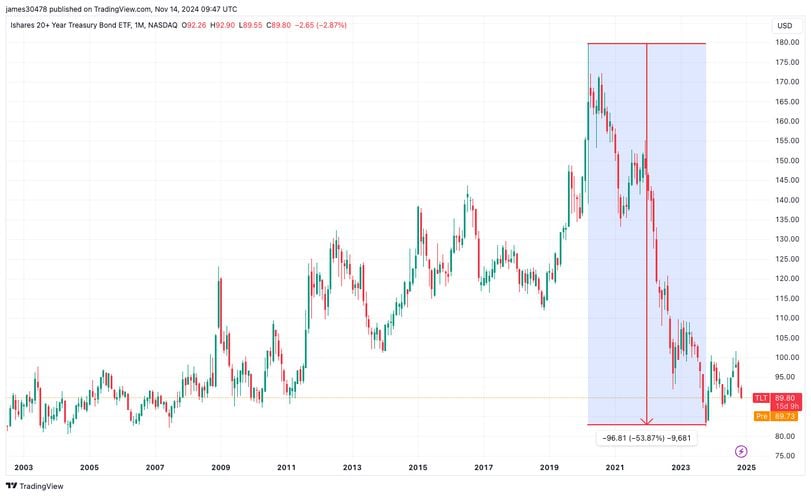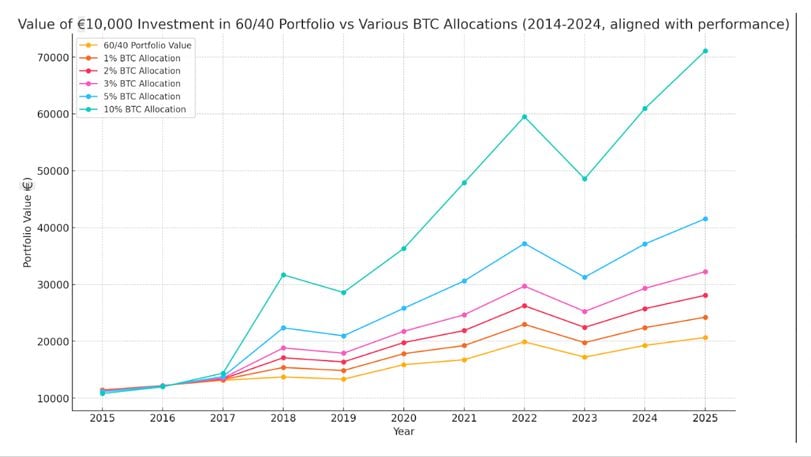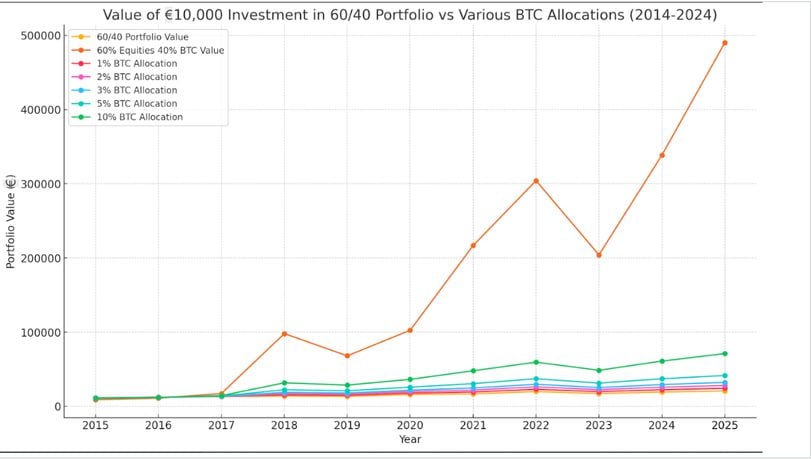It may be time to reassess the wisdom of the 60/40 portfolio, which was created back in the early 1950’s and is often referred to as the “Modern Portfolio Theory”. The theory was created by Harry Markowitz who tried to optimize a portfolio from a risk reward standpoint .
The traditional 60/40 portfolio is split into equities (60%) and fixed income (40%). It was designed to make the portfolio diversified and balanced, and managing both risk and growth simultaneously.
Equities would give you those much-needed returns in good times, but in bad times, bonds were there to capture the drawdowns and weather the storm. However, we may need to change our thinking as we head into a new era of inflation above 2% and high interest rates.
The U.S. Consumer Price Index (CPI) inflation year-over-year has not been at the Federal Reserve mandate of 2% since February 2021. In fact, as of Nov. 13, CPI inflation was 2.6%, a 0.2% increase from the month prior.
Interest rates globally have continued to decline in the last four decades, pushing bonds higher, especially during the post-2008 zero-rate policy environment. However, since 2021 interest rates have risen and bonds have suffered, experiencing their largest drawdowns. An example of this is the BlackRock iShares 20-plus Year Treasury Bond ETF (TLT), which has witnessed a 54% drawdown from its peak in 2020 to the trough in 2023.

Beating inflation is the name of the game now, as currency debasement becomes a real concern for investors worldwide. This can be seen in the bond market, where the U.S. 10-year yield climbed to its highest level since July after the Fed’s first rate cut back in September, now at 4.4% from 3.6%, crushing bonds in the process.
The 60/40 portfolio
Taking a look at veri from Curvo, a veri and financial provider, we can see what a 60/40 portfolio would look like.
For equities, Curvo chose iShares Core MSCI World UCITS ETF USD in the MSCI World Index and for the bonds, they take Xtrackers Küresel Sovereign UCITS ETF 1C EUR hedged in the FTSE World Government Bond – Developed Markets index. Since the beginning of 2014, an initial investment of euro 10,000 ($10,500) investment would have returned just above euro 20,000 ($21,000), essentially doubling in 10 years. Which seems like good returns.
However, what would happen if we add bitcoin (BTC) to the mix?
For the analysis, we have taken a 1%, 2%, 3%, 5%, and 10% allocation in bitcoin. A 1% allocation would see a 0.5% decrease in both equities and bonds to keep the split equal; this would be the same as the BTC allocation incrementally gets higher. As you can see the higher the bitcoin allocation the greater the return. A 10% bitcoin allocation would yield of over euro 70,000 ($73,000) or over a 3x return compared to the traditional equity allocation.

Just for fun, we adapted the original 60/40 portfolio to include 60% equities and a 40% bitcoin allocation to replace the bonds, the results show a whopping 50x return of nearly euro 500,000 ($526,000).

To include 2024 veri, the analysis takes a year-to-date return of 101% for bitcoin. While, taking the average annual performance of the original 60/40 portfolio.
Due to bitcoin’s risk-off monetary properties, such as not having a CEO or a central point of failure, bitcoin can act as a diversified entity in a 60/40 portfolio. The analysis didn’t include tech stocks such as Tesla {{TSLA}} or NVIDIA {{NVDA}} for these reasons.
Also, since its inception bitcoin has provided greater returns than gold annually, hence we opted for bitcoin.
